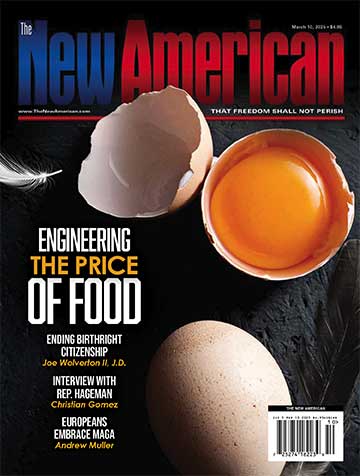
Three reports released on Friday give a glimmer of hope that the worst may be behind for the U.S. economy.
While the headline from MarketWatch shouted, “Retail Sales Crater 16.4% in April,” the details were far less concerning. Auto dealers reported that April sales of new vehicles were off 12 percent. Translation: Despite nearly complete shutdowns of all economic activity in many states, somehow consumers still bought new vehicles at a rate of 88 percent of normal.
Gas stations saw their sales drop by 29 percent, which meant that, somehow, even though traffic has fallen off dramatically in response to the COVID-19 edicts, they still managed to sell gas and fast food items at nearly 70 percent of normal.
Grocery stores are operating at 87 percent of normal; clothing stores reported sales at 22 percent of normal even though most malls are closed. Electronics stores are still operating at 40 percent of normal, while furniture stores reported sales at 40 percent of normal. Bars and restaurants, most of which are closed, still managed to report sales at 70 percent of normal.
Lest we be accused of seeking signs of light in a darkened room, consider the Empire State Manufacturing Survey, which also reported on Friday. While its index was at -48.5 (anything below zero indicates a deteriorating economy), it was 30 points ahead of March and 20 points ahead of economists’ forecasts. Behind the headlines, the new-orders index rose 24 points over last month while the shipments index jumped 30 points.
In addition, business optimism is returning, according to the survey:
On the whole, firms expected business conditions to be better in six months.
The index for future business conditions rose 22 points … [while] indexes for future new orders and future shipments also posted significant increases.
Consumer sentiment is improving as well. The University of Michigan’s consumer sentiment index, also released on Friday, was 73.7 for May, up from 71.8 in April and well above the estimates of Dow Jones economists, who forecast just 65.
Perhaps the most encouraging, and reliable, is Wall Street’s behavior. Long considered a bellwether for future economic activity — usually six months out — the Dow Jones Industrial Average bottomed at 18,600 on March 23. It is currently trading at 23,400, a gain of nearly five thousand points — 26 percent — in less than two months.
As states reopen for business and business activity continues to pick up, it’s likely that, looking back, one can see clearly that the U.S. economy touched bottom in March.
The nascent rebound is also working in the president’s favor. A poll released by Trump’s enemy No. 1, CNN, on Tuesday showed a 50-percent approval rating on how he is handling the economy. After reporting that this was in line with other recent polls, CNN lamented, “All of these data points are good signs for Trump. The bad economy doesn’t seem, right now, to be hurting him electorally too much, and it may never lead to the type of blowback that past economic downturns have for the incumbent party.”
Image: honglouwawa/iStock/Getty Images Plus
An Ivy League graduate and former investment advisor, Bob is a regular contributor to The New American, writing primarily on economics and politics. He can be reached at [email protected].




